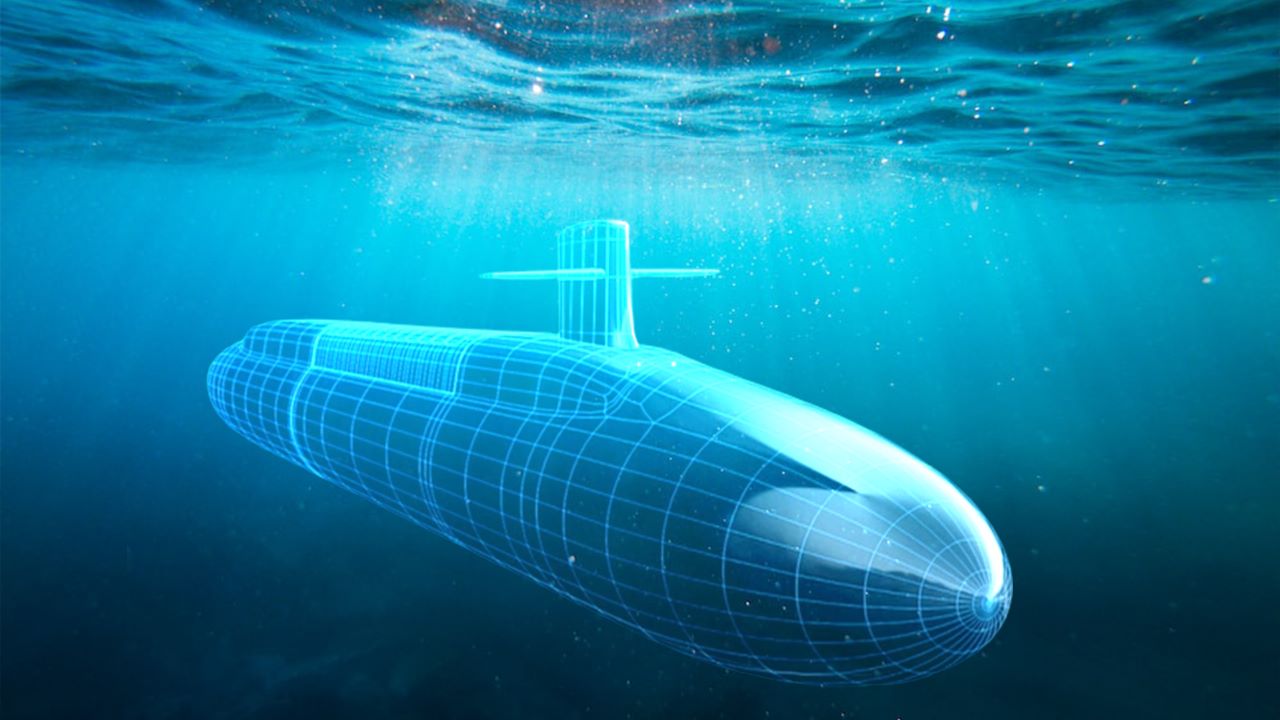France has become the third country after the US and Israel to demonstrate the capability to launch an unmanned aerial vehicle (UAV) from a nuclear-powered submarine (SSN).
Submarines provide a huge strategic and tactical edge as they exploit the opaqueness of oceans. However, the same advantage turns disadvantageous as subs cannot see beyond the periscope’s horizon. Hence, the ability to launch a drone while remaining submerged adds a lot to a submarine’s situational awareness and deception.
In submarine warfare, increased proximity to the target raises the risk of detection. With the drone’s capability, submarines can now hit their targets from a safer distance. Additionally, the submarine-launched unmanned aerial vehicle allows the submarine to simultaneously engage multiple targets by deploying drones and torpedoes.
During the tests, the drone system developed by the French Naval Group and SME Diodon was released from a submerged French Navy’s Rubis-class nuclear-powered submarine. The UAV came to the surface in a waterproof protective cocoon.
Once it reached the surface, the cocoon opened, and the drone positioned itself above sea level. The SSN then raised its communication antenna to establish the data link. Once communication was established, the drone was piloted from the submarine, providing video feedback from the drone’s camera on the operator’s console.
[#DRONES] ⚓ 💡 Episode 2 – Drones: a technical challenge
For the first time in France, an aerial drone was successfully launched from a nuclear attack submarine (SSN). This technical challenge was carried out by Naval Group and its partners @DiodonDrone and the @MarineNationale pic.twitter.com/OSCFgZc4bX
— Naval Group (@navalgroup) September 5, 2023
According to the French Ministry of Defense, the drone will help the submarine extend the perimeter and horizon of its sensors and capabilities. The drone can gather intelligence, surveillance, reconnaissance, visible or infrared ISR, radio relay, send small packages to special forces in the field, etc.
This “disruptive operational capability” can be integrated into the current fleet.
The US Navy announced in 2013 that it had successfully demonstrated the ability to launch an encapsulated UAV from a submarine’s torpedo tube. The US Navy acquired the submarine-launched aerial drone capability in September 2020 after three demonstration rounds.
Later, in 2021, the US Navy floated a tender to induct a four-pound Blackwing UAV with a GPS autopilot system and a secure digital data link to remain connected with the submarine. It was launched from submarines’ three-inch countermeasures tubes during the demonstration. To fit inside a canister, the Blackwing has two pop-out wing sets spanning 27 inches. An electric motor-driven pusher propeller powers it.
The drone can be launched from submerged submarines and unmanned underwater vehicles (UUVs).
In 2020, an Israeli firm, Spear, unveiled a line of encapsulated drones that can be deployed from underwater launch systems. Launched from submarines, the drones can loiter for nearly an hour and provide surveillance while the launched platform remains underwater.
The firm showcased the new Ninox 103 at an Undersea Defense Technology show in the Netherlands in 2022, and it was well received. The US Department of Defense was also given a demonstration of the same.
The system has undergone testing up to 30 meters in depth underwater, and the company says it can go up to 50 meters deep. The best part is that the submarine will not be required to undergo a major refit and can be integrated into existing vessels.
The UAV has an endurance of 50 minutes and a communication range of 10 kilometers. It can carry a 1-kilogram payload, whether it’s optics technology or another capability, as Ninox 103 can be used as a communications relay, for intelligence gathering, or as a loitering munition.

The drone can integrate itself with a communication network post-launch. In other words, it can communicate with the forces nearby. This ruggedized system can withstand wind speeds of up to 20 knots and other harsh weather and battle conditions. The most advanced capabilities of the drone system include swarm, mesh, computer vision, target tracking, homing algorithms, and more.
A company statement noted the drone is designed for undetectable, underwater launch and uses an “autonomous” artificial intelligence-based system. The company also said the drone can also be embedded with point-to-multipoint networking, meaning after the submarine releases the UAV, the aerial system can communicate with forces operating nearby.
The US Navy has also shown interest in the Israeli underwater-launched loitering munition drone. The beyond-line-of-sight intelligence-gathering capability can be a game changer for a submarine during conflict.
They can act as decoys or carry payloads like electronic warfare jammers crippling the adversary. An armed UAV launched from a submarine can neutralize close-in threats like small boats.
- Ritu Sharma has been a journalist for over a decade, writing on defense, foreign affairs, and nuclear technology.
- She can be reached at ritu.sharma (at) mail.com




